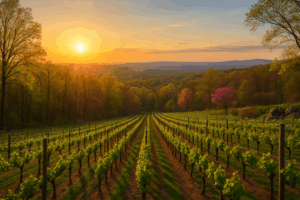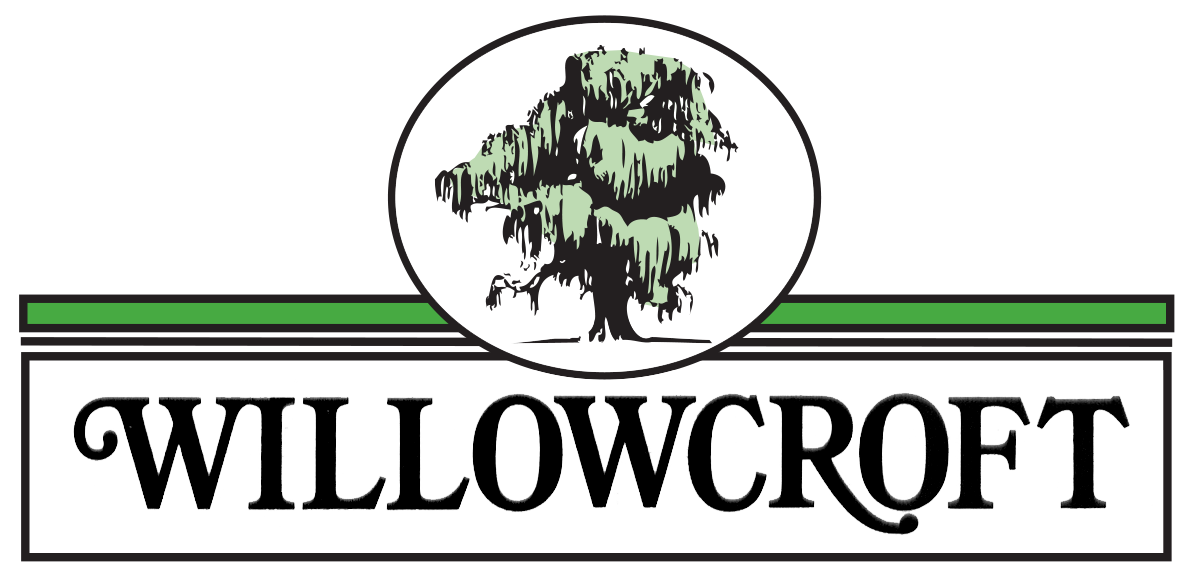
At Willowcroft Farm Vineyards, our wines are shaped as much by the land beneath the vines as by the hands that tend them. Perched high atop the Catoctin Ridge—600 to 750 feet above the valley floor—our vineyards occupy a site that is both scenic and scientifically ideal for growing premium wine grapes. Here, slope, sunlight, and elevation work together to create an environment where the vines must work harder, and the resulting fruit rewards that effort with remarkable depth and balance.
Elevation and Climate Moderation
Our ridge-top setting offers a natural climate advantage. The elevation provides a buffer against late spring frosts that can devastate vines at lower altitudes. Cold air naturally drains down the slopes, protecting tender buds from freezing temperatures. In summer, the higher altitude brings cooler nighttime temperatures that slow ripening just enough to preserve the grapes’ acidity and structure. This balance between warm days and cool nights—known as diurnal shift—is one of the keys to producing wines with vibrant aromatics and refreshing balance.
Air and Water Drainage
Vineyards on sloped terrain benefit from superior airflow and drainage. The constant movement of air across our vines helps reduce humidity and minimize the risk of fungal disease, a common challenge in Virginia’s humid climate. Likewise, the slope allows rainwater to flow away quickly, preventing the soil from becoming waterlogged. This forces the vines to send their roots deep in search of moisture and nutrients—a process that naturally limits their vigor and produces smaller, more concentrated berries with thicker skins. Those thicker skins contribute tannin, color, and flavor intensity in our finished wines.
Concentrated Sunlight
Elevation also affects how sunlight reaches the vines. On the ridge, our vineyards receive more direct and consistent sunlight throughout the day, allowing the grapes to ripen fully and evenly. The increased sunlight intensity helps develop rich, layered flavors and complexity—hallmarks of Willowcroft wines.
Soil Character and Composition
The Catoctin Ridge’s soil sets Willowcroft apart from many neighboring vineyards in Loudoun County. While much of the region features heavy red clay, our vineyards rest on lean, rocky, well-drained soil. These stonier conditions may not seem lush, but for grapevines, they’re ideal. Vines grown in these soils must work harder to survive, channeling their energy into fruit rather than excessive foliage. The result is grapes with concentrated flavor, balanced sugars and acids, and a distinct sense of place that reflects our ridge’s character.
A Vineyard in Harmony with Nature
By embracing the natural topography of the Catoctin Ridge—its slopes, soils, and elevation—Willowcroft Farm Vineyards continues a long tradition of working with the land, not against it. Our commitment to dry farming (without irrigation) deepens this connection, allowing the vineyard’s true terroir to shine through in every bottle.
When you enjoy a glass of Willowcroft wine, you’re tasting more than fruit—you’re tasting the story of a ridge, a climate, and a landscape that together create something truly special.
